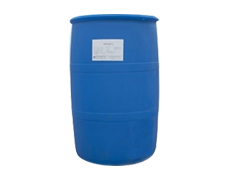The reason why pesticides are accused of being the culprit of environmental safety is that, in addition to the backward level of use technology and the lack of scientific and rational use knowledge, the toxicity and cumulative pollution of various components in pesticide preparations are also very important, resulting in a series of negative problems such as environmental pollution, personnel poisoning, excessive residue and so on. The development of green surfactants with biological source, environment-friendly, low biological toxicity, easy degradation and no harm to crops is rising abroad. These surfactants show good interfacial properties and play an important role in improving pesticide bioactivity, reducing drug dosage, reducing cost and reducing environmental pollution.

China is a large agricultural country. The demand for pesticides is very large, ranking second in the world. The demand for surfactants is increasing day by day, which puts forward higher requirements for the use of surfactants in pesticide processing. At present, the substitution of water-based preparations for highly polluting and toxic emulsified oil preparations has attracted extensive attention, but the application of green surfactants instead of traditional emulsifiers in water-based preparations has not attracted enough attention. Green surfactants mostly come from biomaterials. As emulsifiers, they can act on biomaterials, which is of great significance for the rational use of chemical raw materials and environmental protection. Therefore, how to improve the formulation and replace the application of traditional surfactants in pesticide processing with green surfactants is the guiding direction for the development of environmental protection pesticide preparations in the future.
When the dosage of surfactant is low, it can significantly reduce the surface tension of the solution. Above the critical aggregation concentration, it can spontaneously assemble to form various types of molecular ordered aggregates, which plays an important role in various important processes, such as wetting, spreading, foaming, emulsification, solubilization dispersion and washing. Surfactants play an extremely important role in industrial production and people's daily life. By 2005, the global use of surfactants had exceeded 1250x104 t. In recent years, with the enhancement of people's awareness of environmental protection, higher requirements have been put forward for the development and application of surfactants. The preparation and application of green surfactants have become a research hotspot.
Like conventional surfactants, green surfactants can also be divided into anionic, cationic, amphoteric and non-ionic types according to the charging properties of hydrophilic groups. Because of the typical structure of amphiphilic molecules, green surfactants have all the characteristics of conventional surfactants; However, different from conventional surfactants, most of these surfactants come from natural raw materials, so they have low biological toxicity, good environmental compatibility and fast biodegradation rate. At present, the green surfactants widely used in pesticides can be divided into the following categories: fatty alcohol polyoxyethylene ether (AEO), fatty alcohol polyoxyethylene ether sulfate (AES), fatty alcohol polyoxyethylene ether carboxylate (AEC), a-alkenylsulfonate (AOS), alkyl glycoside (APG), etc.